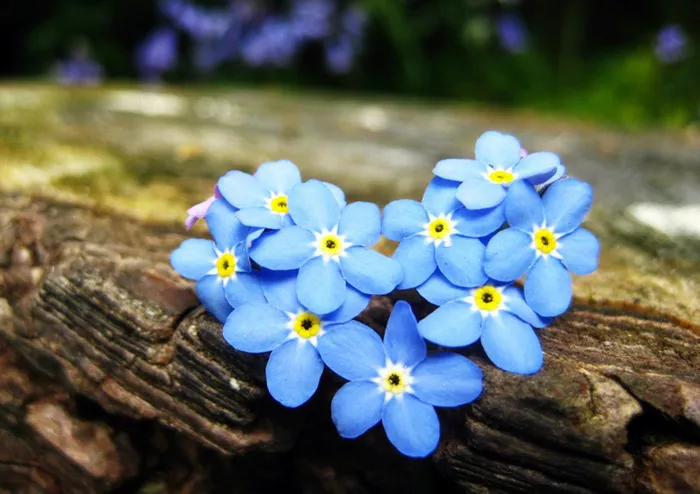The sight of vast fields adorned with colorful blooms evokes a sense of tranquility and beauty. Among the myriad hues that grace these landscapes, the ethereal allure of blue flowers stands out as a captivating spectacle. These delicate blossoms, with their serene shades ranging from the palest sky blue to the deepest indigo, add a touch of enchantment to the natural world. In this article, we embark on a journey to explore the fascinating realm of blue flowers grown in fields, uncovering their diversity, significance, and the magic they bring to our surroundings.
The Diversity of Blue Flowers
Blue flowers encompass a wide array of species, each possessing its unique characteristics and allure. One of the most iconic blue flowers found in fields is the Cornflower (Centaurea cyanus), also known as Bachelor’s Button. Its vivid azure petals have adorned European landscapes for centuries, symbolizing simplicity and rural charm. Cornflowers often thrive in meadows and grain fields, their vibrant blooms contrasting against the golden hues of wheat or barley.
Another beloved blue flower is the Chicory (Cichorium intybus), boasting striking sky-blue petals that adorn roadsides and fields across many continents. Beyond its ornamental appeal, Chicory has culinary and medicinal uses, with its leaves adding a pleasant bitterness to salads and its roots brewed into a caffeine-free coffee substitute.
Delphiniums, with their towering spikes of rich blue florets, are a staple of cottage gardens and wildflower meadows. These majestic blooms lend vertical interest to landscapes and attract pollinators with their nectar-rich blossoms. From the electric blue hues of Delphinium elatum to the softer shades of Delphinium grandiflorum, these perennial favorites evoke a sense of nostalgia and grace.
The Forget-Me-Not (Myosotis spp.) is a charming woodland flower that often spills over into fields and meadows, carpeting the ground with tiny, azure blossoms. Its name carries sentimental significance, symbolizing enduring love and remembrance. Despite its diminutive size, the Forget-Me-Not exudes a quiet elegance that captures the hearts of all who encounter it.
Cultural Significance and Symbolism
Throughout history, blue flowers have held symbolic meaning in various cultures and traditions. In many societies, the color blue is associated with qualities such as calmness, serenity, and spiritual reflection, making blue flowers powerful symbols in art, literature, and folklore.
For the ancient Egyptians, blue lotus flowers held sacred significance, symbolizing rebirth and the cycle of life. These revered blooms were often depicted in religious art and were believed to have mystical properties.
In the language of flowers, a form of communication popular during the Victorian era, blue blooms conveyed sentiments of trust, loyalty, and fidelity. Couples exchanged Forget-Me-Nots as tokens of enduring love, while the Cornflower symbolized loyalty and devotion.
In Japanese culture, the delicate blooms of the Bluebell (Hyacinthoides non-scripta) are associated with humility and gratitude. These graceful flowers, known as “Aoi” in Japanese, are celebrated in poetry and literature for their understated beauty and gentle demeanor.
Ecological Importance
Beyond their aesthetic appeal and cultural significance, blue flowers play a vital role in supporting biodiversity and ecosystem health. As pollinators such as bees, butterflies, and hummingbirds are drawn to the vibrant hues of blue blossoms, they facilitate the crucial process of plant reproduction. By transferring pollen from flower to flower, these pollinators ensure the survival of countless plant species and contribute to the stability of ecosystems.
Moreover, blue flowers often thrive in habitats that require specialized adaptations, such as sandy coastal dunes or alpine meadows. Their ability to flourish in these environments reflects their resilience and capacity to withstand diverse climatic conditions. As such, preserving habitats that support blue flowers is essential for conserving biodiversity and protecting fragile ecosystems.
Cultivation and Care
For those inspired to cultivate blue flowers in their own gardens or fields, selecting suitable species and providing optimal growing conditions are key considerations. Many blue flowers, such as the Cornflower and Chicory, prefer full sun and well-drained soil. Incorporating organic matter into the soil and ensuring adequate moisture will promote healthy growth and abundant blooms.
When planning a blue-themed garden or meadow, it’s essential to consider complementary colors and textures to create visually harmonious compositions. Combining blue flowers with white or yellow blooms can enhance their beauty and create a striking contrast. Additionally, incorporating native species into the landscape can benefit local wildlife and promote ecological resilience.
Conclusion
In the tapestry of nature, blue flowers in fields stand out as jewels of serenity and grace. From the humble Cornflower to the majestic Delphinium, these delicate blooms captivate our senses and inspire awe with their ethereal beauty. Beyond their ornamental allure, blue flowers hold symbolic significance across cultures and play a vital role in supporting biodiversity and ecosystem health.
As stewards of the land, it is our responsibility to cherish and protect these precious treasures, ensuring that future generations can continue to revel in the enchantment of blue flowers in fields. Whether adorning rural landscapes or gracing urban gardens, these celestial blossoms serve as reminders of the inherent beauty and resilience of the natural world.


